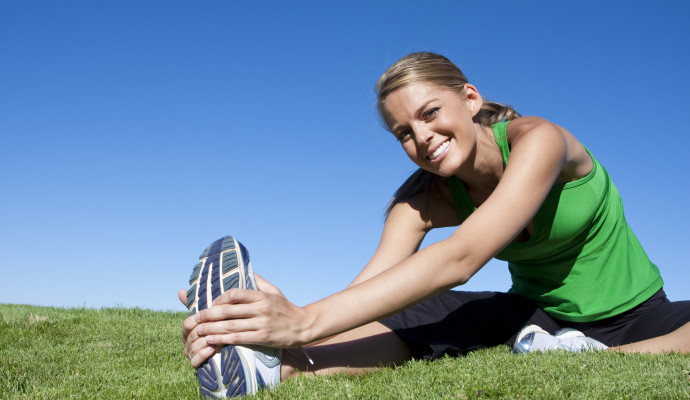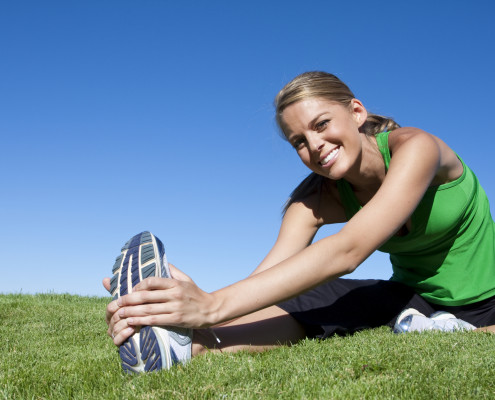ASK THE PHYSIO: When should I stretch?

This month we are going to follow on from where we left off in the last newsletter (see reception if you’d like a copy). The question was posed, “is it better to stretch before or after exercise?”. If we now know stretching
beforehand won’t reduce soreness or improve performance were you left pondering … what should I actually be doing?
Warm-up vs stretching
Much of this confusion comes from a misinterpretation of research on warm-up. Previous studies found that warming up by itself has no effect on range of motion, but that when the warm-up is followed by stretching there is an increase in range of motion. Many ‘experts’ misinterpreted this finding to mean that stretching before exercise prevents injuries, even though the clinical research suggests otherwise. A better interpretation is that warming up prevents injury, whereas stretching has no effect on.
If injury prevention is the primary objective, the evidence suggests that athletes should limit the stretching before exercise, and increase the warm-up time.
What should be included in my warm up?
Get Dynamic
According to the latest research, you should actually begin your workouts with dynamic warm-ups to prepare your body for exercise. It is important to include exercises and stretches that contain the range of motion movements that are similar to the movement specific actions involved in the proceeding activity. Dynamic warm ups which include stretching help to increase blood flow to connective tissue around the muscles and increases the core body temperature to prepare the body for an upcoming activity.
In conclusion – is it better to stretch before or after exercise?
Ideally, prior to exercising, it is a good idea to perform a warm-up which includes movements similar to that which will be occurring in the proceeding activity. It is important to recognise that static stretching does have its benefits, particularly for improved posture and flexibility, which for the majority of the sedentary population, is vital in preventing and treating overuse injuries. However, when sorting out all the research on stretching and flexibility for athletes, the goal of stretching is to develop and maintain an appropriate range of motion around specific joints. It’s also important to realise that stretching tight muscles should go hand in hand with strengthening the weak muscles. Stretching after exercise can therefore be used to improve range of motion and associated flexibility as well as allowing a cool-down following exercise.
I’m sure we’ll continue to see headlines for and against stretching, but if you choose to stretch, it may be best to customise your routine to fit your needs. Come and see one of our physiotherapists who will assess your body and your sport and make sure you stretch (and strengthen) the right muscles whereby reducing muscle imbalances. Don’t forget, one of the biggest benefits of stretching may be something the research can’t quantify: it just feels good!
Revesby Physiotherapy has been established for more than 25 years and provides the local area with a high level of expertise in the assessment and treatment of musculoskeletal injuries. Health Mates members receive a discount on treatment phone them today on 9772 2586 and organise your free initial assessment.










